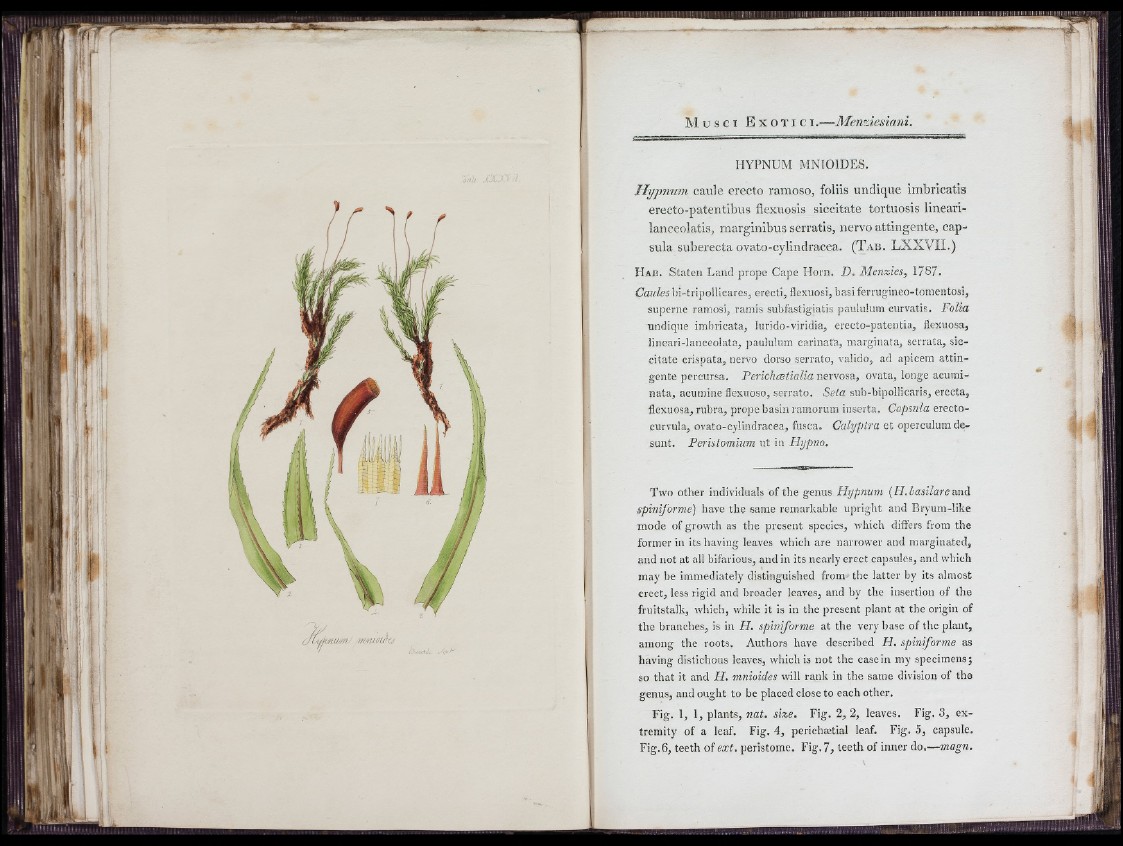
;
ki
/ I
u
M u s e i E x o t i c i .—Mejiztesiani.
HYPNUM MNIOIDES.
Hypnum caule erecto ramoso, foliis undique imbricatis
erecto-patentibus flexuosis siccitate tortuosis lineari-
lanceolatis, marginibus serratis, nervo attingente, capsula
suberecta ovato-cylindracea. ( T a b . LXXVII.)
H ab. Staten Land prope Cape Horn. D. Menzies, 1787.
Cawfci l)i-tripollicares, erecti, flexuosi, basi ferrugineo-tomentosi,
superne ramosi, ranìis subfastigiatis paululum curvatis. Folia
undique imbricata, lurido-viridia, erecto-patentia, flexuosa,
lineari-lanceolata, ¡jaululum carinata, marginata, serrata, siccitate
crispata, nervo dorso serrato, valido, ad apicem attingente
percursa. Ferichætialia nervosa, ovata, longe acuminata,
acumine flexuoso, serrato. Seta sub-bipollicaris, erecta,
flexuosa, rubra, pro])e basin ramorum inserta. Capsula eiecto-
curvula, ovato-cylindracea, fusca. Calyptra et operculum desunt.
Peristomium ut iu Hypno.
Two other individuals of the genus Hypnum {H. basilare and
spiniforme) have the same remarkable upright and Bryum-like
mode of growth as the present species, which differs from the
former in its having leaves which are narrower and marginated,
and not at all bifarious, and in its nearly erect capsules, and which
may be immediately distinguished from the latter by its almost
erect, less rigid and broader leaves, and by the insertion of the
fruitstalk, which, while it is in the present plant at the origin of
the branches, is in H. spiniforme at the very base of the plant,
among the roots. Authors have described H . spiniforme as
having distichous leaves, which is not the casein my specimens;
so that it and H. mnioides will rank in the same division of tho
genus, and ought to be placed close to each other.
Fig. 1, 1, plants, nat. size. Fig. 2, 2, leaves. Fig. 3, extremity
of a leaf. Fig. 4, perichætial leaf. Fig. 5, capsule.
Fig. 6, teeth of ext, peristome. Fig. 7, teeth of inner do.—magn.